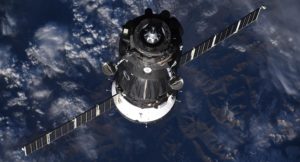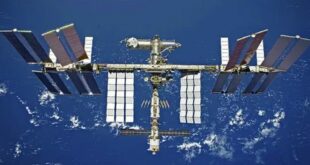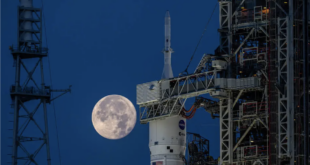
An air leak alert at the International Space Station was registered by the ground crews at about 2:00 am on Thursday, August 30. The pressure dropping slightly, and the mission controllers in Houston and Moscow were not alarmed.
Next morning the crew began to search for punctures. It turned out that the breach had occurred in the hull of the Soyuz MS-09 orbital module. The spacecraft has been docked to the station since June 2018. The air was found to be escaping through two small holes 2 mm in diameter. Once it was discovered, the crew took photographs and sent them to Earth.
At the same time, the Russian crewmembers used Kapton tape (a special polymer used for isolation in airplanes and spacecraft) to temporarily seal the leak. But less than an hour later it was reported that the pressure continued decreasing at a rate of 0.6 mm Hg per hour.
Roscosmos and NASA could not immediately reach agreement on how to fix the leak. ISS-56 expedition commander Andrew Feustel requested a 24-hour think period to come up with the best solution since the lives of the crew members were not immediately threatened. The Russian side insisted on permanent repairs using sealant, tape, and medical patches.
But the Russian side insisted on fixing the hole immediately so that the cosmonauts Oleg Artemiev and Sergei Prokopiev sealed the hole with a sealant. It began to bubble, and in order to let it set, the repair was postponed until the morning. Now the leak is contained, the crew is going to install the second patch over the seal.
The leak was located in the orbital module, and not in the descent module. That’s why the descent to Earth is not a problem for the crew. In case the situation with the breach continues, one of the feasible rescue scenarios would be for Roscosmos to send the Soyuz MS-11 spacecraft in the automatic mode to the station. The spacecraft has already been delivered to Baikonur cosmodrome.
 SpaceWatch.Global An independent perspective on space
SpaceWatch.Global An independent perspective on space




